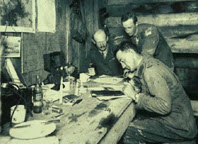 |
| One Client Many Apps |
It is an interesting concept. You can access the Agenda environment in the cloud, configure your integration with backend databases, layout your mobile application screens, download the mobile client to your device, and then login and upload any and all mobile applications you have configured. Each additional business process that you want to mobilize is simply a configuration exercise, that gets uploaded to the same mobile client on the next login. You can open your mobile client and see a menu with all of your unique mobile applications, all in the same mobile client.
You give up some native graphical user interface flexibility when you use the same mobile client for all applications, but what you gain is:
- Lower development costs
- Less development time
- Less deployment effort
- Less support issues
- Lower TCO (total cost of ownership)
It is an interesting approach to enterprise mobility. It is very utilitarian. Mobilize as many business processes as you want for one low price. I like the idea that one mobile client, can be configured to run hundreds of different workflow kinds of applications, rather than buy separate mobile applications for every different business process.
Webalo's product approach and strategy invites a debate on the value of spending a lot of time on the user interface. Some vendors spend most of their time talking about their beautiful user experience. Others take the approach that a simple menu driven approach that quickly and cost effectivly provides mobile capabilities is worth a lot more and commands a better ROI.
What do you think?
***************************************************
Kevin Benedict, Independent Mobile and M2M Industry Analyst, SAP Mentor Volunteer
Follow me on Twitter @krbenedict
Join the SAP Enterprise Mobility Group on Linkedin
Read The Mobility News Weekly
Read The Mobile Retailing News Weekly
Read The Field Mobility News Weekly
Read The Mobile Money News Weekly
Read The M2M News Monthly
Full Disclosure: I am an independent mobility analyst, consultant and blogger. I work with and have worked with many of the companies mentioned in my articles.



